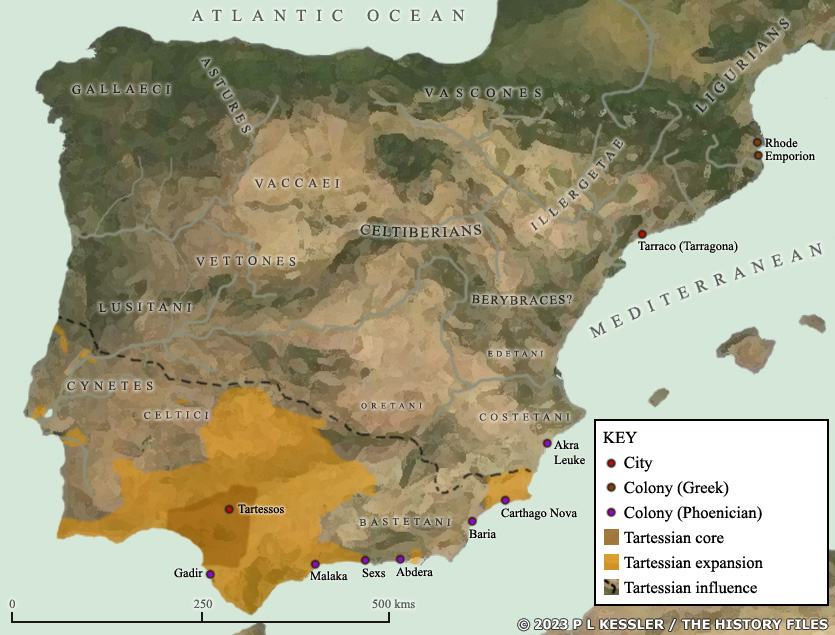|
|


|
Map of Iberian Iron Age Cultures c.600-500 BC |
|
The Iberian peninsula prior to the Carthaginian invasion and partial conquest was a melting pot of various tribes and influences, some native Aquitani and Iberian, some Celtic, some pre-Celtic, some Ligurian, and with many degrees of intermixing. Controlling that - or at least providing a cultural expression of it - in the north was the Castro culture of the early Gallaeci and Astures groups. The Vettones of the western-central zone had the Cogotas II culture. The south-west contained a much richer, more technologically-advanced civilisation in the form of the Tartessian culture. The port city of Tartessos has quickly flourished after about 900 BC, roughly the same period in which Castro culture emerged, to interact heavily with Phoenician traders and their colony settlements. By the period between 600-500 BC it was at its height, with expanded territory (which to an extent is theoretical as archaeological work is still uncovering details about this civilisation which, until the twenty-first century, was largely neglected), and an even greater area of influence. The second half of the sixth century BC brought it all crashing down, firstly with a substantial trade interruption when Persia conquered Phoenicia, and then with destruction when Tartessos was struck by a potential earthquake and then tsunami which wiped it out. A clickable version of this map is available for desktop displays. To select a tribe or territory for further information, click on its name or anywhere within its borders.
Map navigation: |
|
Original text and map copyright © P L Kessler, Trish Wilson, and the History Files. An original feature for the History Files. Go back or return home. |